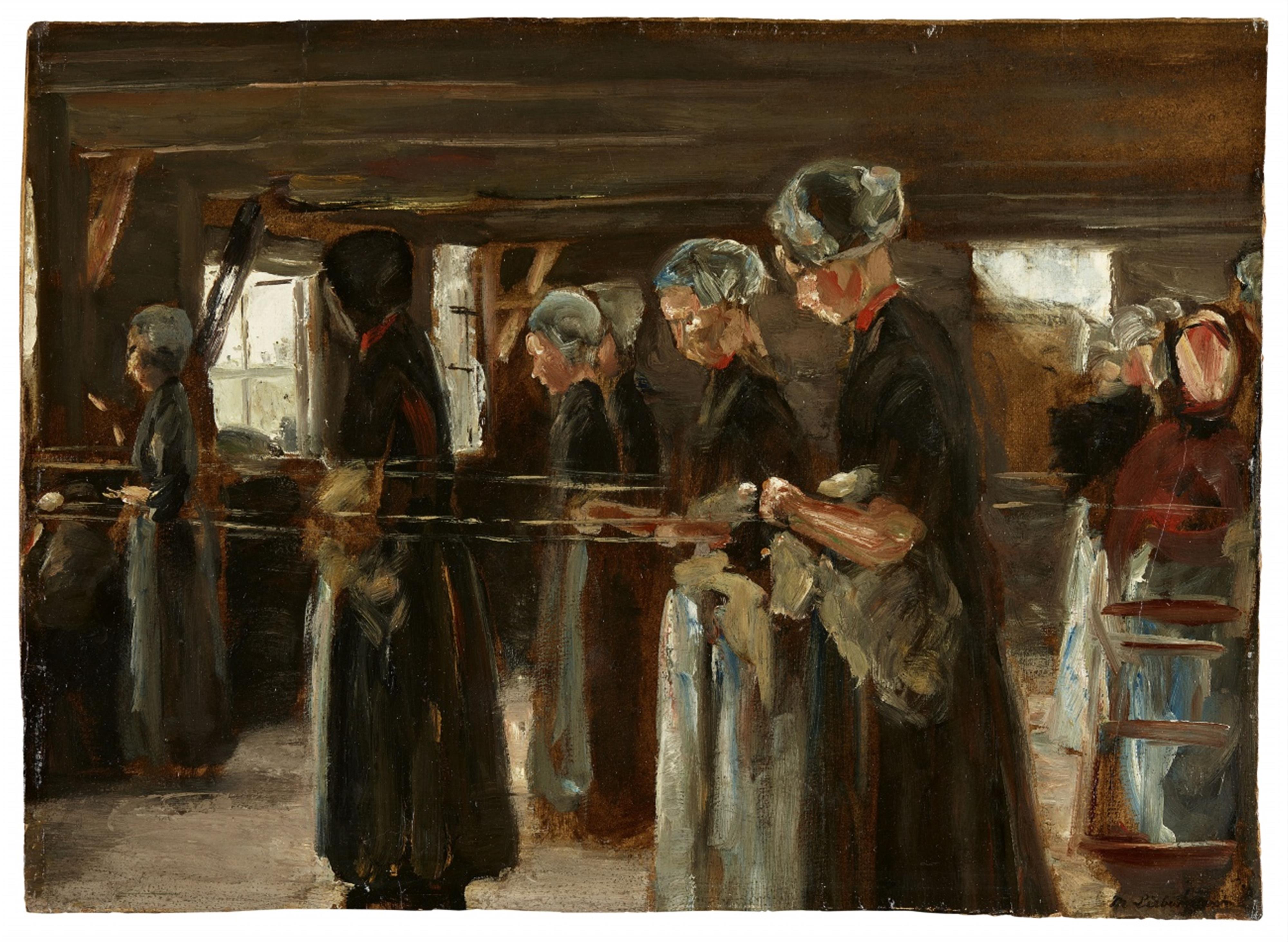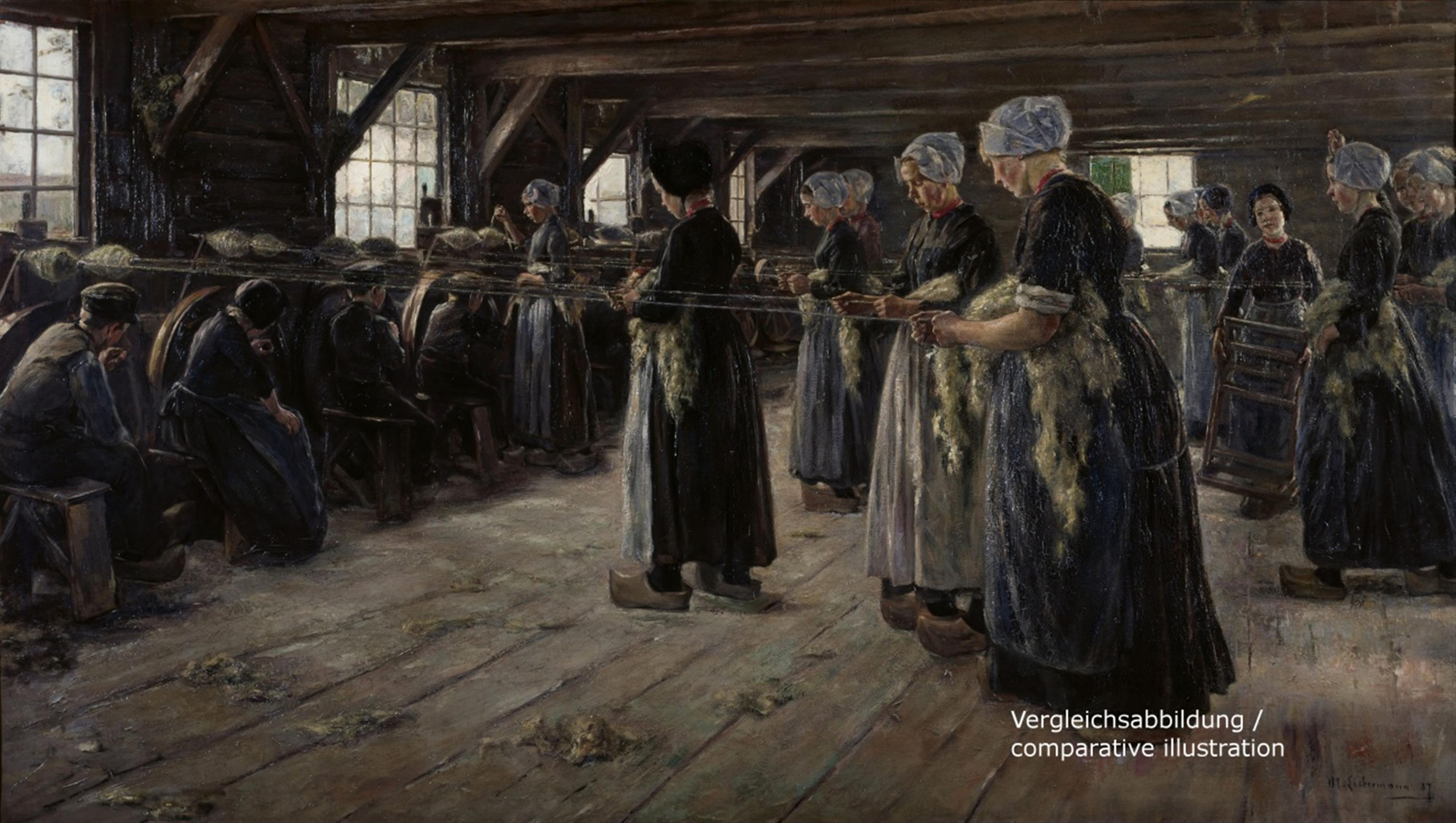Max Liebermann
Kompositionsstudie zur "Flachsscheuer in Laren"
1886
Oil on card 38 x 52.2 cm Framed. Signed "M Liebermann" (possibly not in his own hand) in black lower right. - Professional old restoration.
Scarcely any other German artist approached as close to French Impressionism as Max Liebermann. Jean-François Millet enjoyed a special place among his French role models, and Liebermann injected his realism into the depiction of everyday life within the world of his paintings. However, Liebermann was even more fascinated by the Dutch landscapes, villages and towns of the so-called Hague School of modern painters. From the early 1880s a deep friendship bound Liebermann with Jozef Israëls, in particular, who was presumably the group's most important protagonist; during the honeymoon following Liebermann and Martha's wedding in 1884, the two couples also travelled through Holland together. In his Berlin studio, located on Pariser Platz and directly adjoining the Brandenburg Gate, Liebermann developed the 'Dutch' observations of numerous studies and sketches into paintings. This is also where, in 1887, he created the momentous and monumental painting “Flachsscheuer in Laren”, which was already hanging in Berlin's Nationalgalerie only a year after it was painted: his first museum painting and simultaneously his first main work! In Laren in the summer of 1886, Liebermann met the painter Jan Veth, who directed his attention to the linen mill there. The productive activity within the extended space immediately caught the artist's attention. Like other sketches, this intensive oil study, which retains a somewhat indefinite character, reveals itself to be a very subtly observed composition in which not every detail has been articulated and the selected view suggests it was created directly on location. With the spontaneous brushstroke he so admired in Eduard Manet's work, Liebermann has concentrated on recording his first impression of the factory-like situation with gleaming highlights like the vermilion on the collars. His intention in painting the linen spinners - and thus devoting richly gestural attention to the spinning process repeated each day - lies in his concentration on this presumably typical scene: the women stand in traditional Dutch dress and face in one direction, using their hands to twist into thread the previously prepared bundles of coarse flax pinned under their arms. This manual labour carried out day after day seems to have had a deeply symbolic effect on Liebermann, leading him to observe people and their activity - as in the previous “Netzflickerinnen” or the girls stitching during their break in “Freistunde im Amsterdamer Waisenhaus” - and to use pictures like this compositional study to capture a 'social-romantic Utopia of the little people' in grandly conceived paintings.
Catalogue Raisonné
Eberle 1886/10
Certificate
We would like to thank Matthias Eberle, Berlin, for kind information.
Provenance
Fritz Gurlitt, Berlin (until 1902); Rudolph Lepke, paintings of the first modern masters, sculptures in marble and bronze exclusively from the possession of the company Fritz Gurlitt, Berlin, 1296. auction, Berlin 11 March 1902, no. 48, illus. pl. 3 (there unsigned); Private collection Leipzig (1931); Kunstsalon Abels, Cologne (two labels verso on wooden panel); in private collection since, Hesse
Exhibitions
Leipzig 1931 (Museum der bildenden Künste), Neuere Meister aus Leipziger Privatbesitz, no. 62 not illus.




